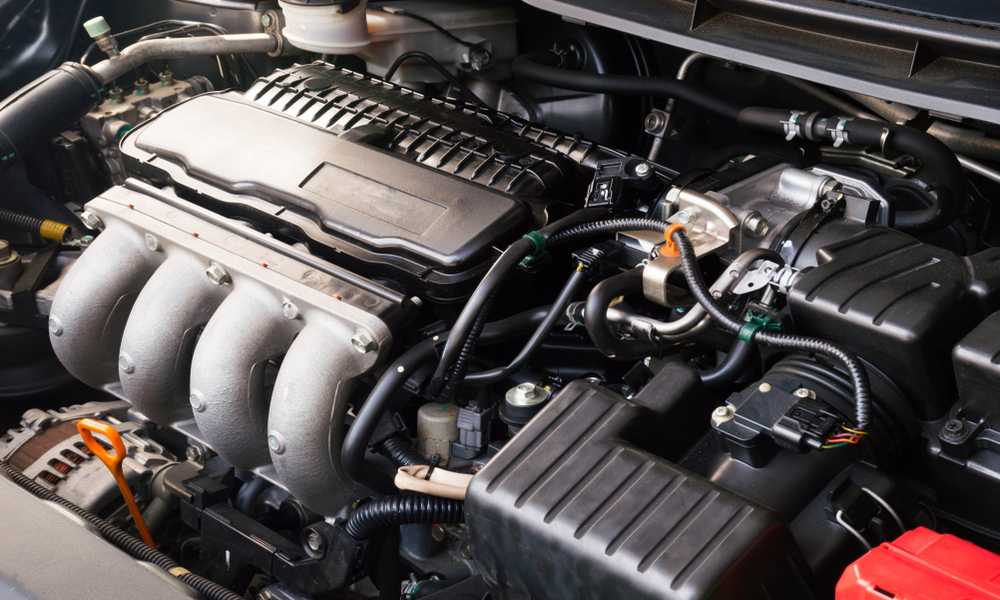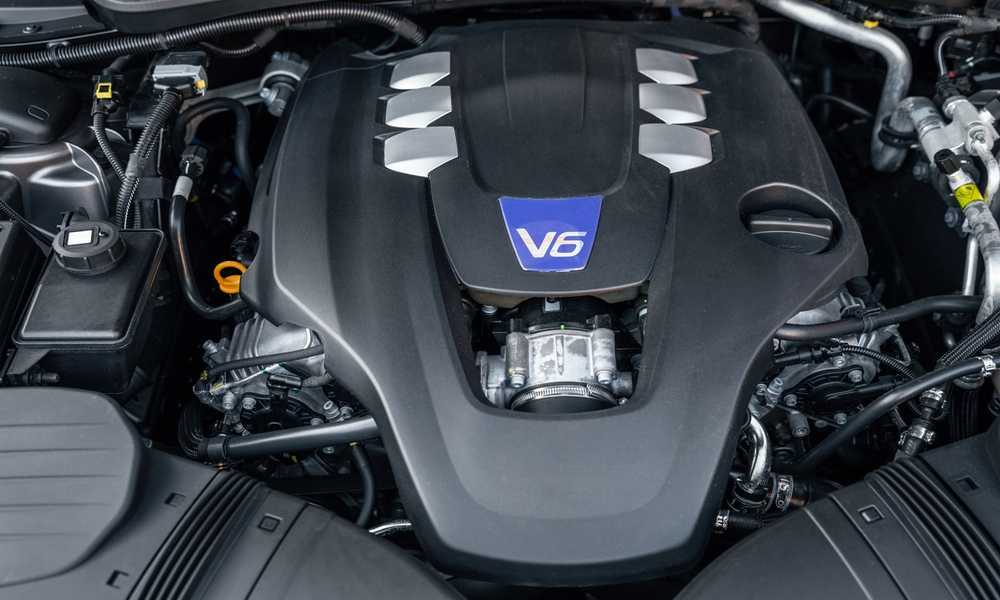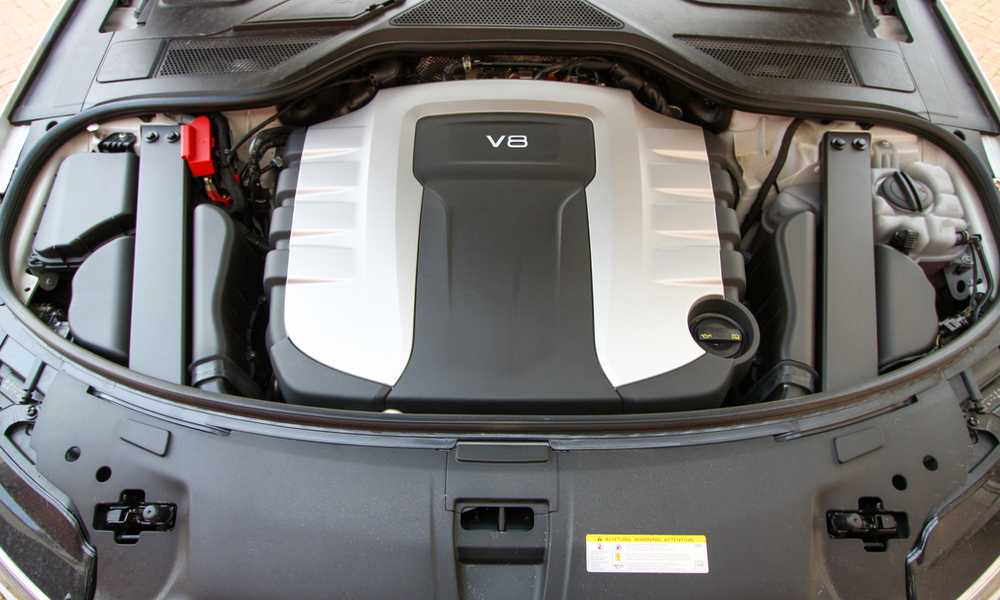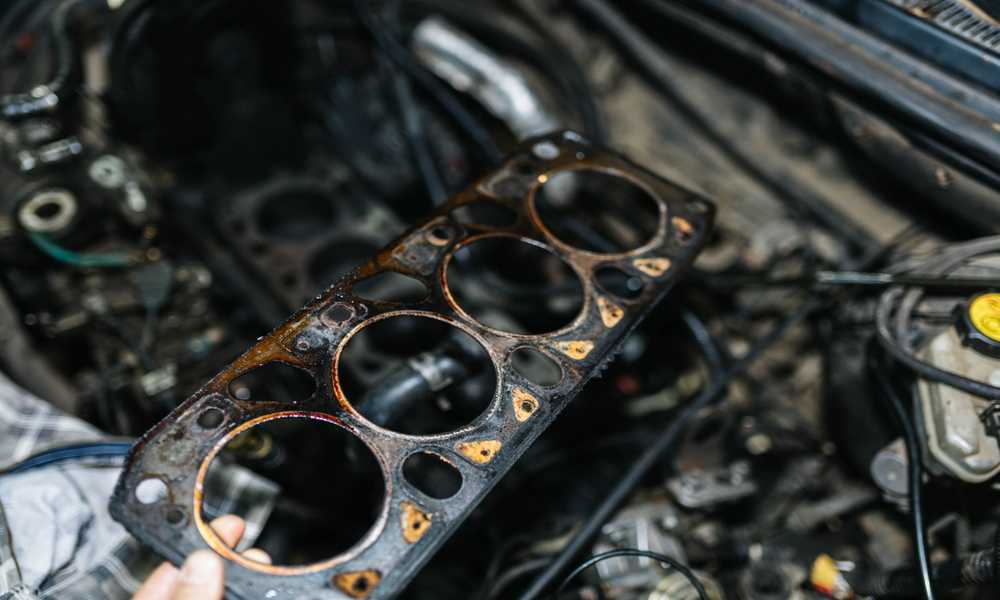Welcome to the exciting world of decoding your vehicle’s secrets! Have you ever wondered how many cylinders are humming beneath the hood of your beloved car? Well, fear not! We’re here to unveil this mystery and provide you with all the authentic information you need. Whether you’re a curious car owner or a passionate technician, In this blog post will guide you through the process of determining how many cylinders is my car by VIN number. So buckle up and get ready for an exhilarating ride into the world of automotive knowledge!
What is a vehicle VIN number?
What is a vehicle VIN number? It’s like the DNA of your car, a unique identifier that sets it apart from all others on the road. VIN stands for Vehicle Identification Number, and it serves as a digital fingerprint for your beloved four-wheeled companion.
This alphanumeric code consists of 17 characters and provides vital information about your vehicle’s make, model, year, and more. It’s like a secret code that only those in the automotive world can decipher.
But why is this number so important? Well, think of it as your car’s birth certificate. With just a few taps on the keyboard or a quick scan with specialized software, you can unlock valuable details about its history and specifications.
From manufacturer recalls to maintenance records, insurance claims to ownership transfers – everything seems to be hidden within those mystical digits. So next time someone mentions VIN numbers at a dinner party, you’ll have an intriguing topic up your sleeve!
What is a cylinder in car?

A cylinder in a car is an essential component of the engine that plays a crucial role in the combustion process. It is essentially a cylindrical chamber where the air-fuel mixture gets compressed and ignited, generating power to propel your vehicle.
In simple terms, think of cylinders as individual chambers within the engine block. Each cylinder contains a piston that moves up and down within it. When fuel is injected into the cylinder and ignited by spark plugs, it creates controlled explosions that push the piston downward with great force.
The number of cylinders in a car’s engine can vary depending on its design and purpose. Common configurations include 4-cylinder, 6-cylinder, or even higher numbers like 8-cylinders (commonly found in high-performance vehicles). The more cylinders an engine has, generally speaking, the more power it can produce.
Having multiple cylinders allows for smoother operation since each one fires at different intervals during each rotation of the crankshaft. This results in better balance and reduced vibrations compared to engines with fewer cylinders.
Understanding what a cylinder is in a car helps you grasp how these powerful machines work under the hood. Whether you drive a compact sedan or a muscular sports car, appreciating this fundamental aspect of automotive engineering adds to your overall knowledge and appreciation for your vehicle.
How can I check my VIN number?
Checking your VIN number is a simple task that can provide you with valuable information about your vehicle. There are several ways to check your VIN number, depending on your preference and the resources available to you.
One option is to use an online VIN decoder tool. These tools allow you to input your VIN number and instantly receive detailed information about your vehicle, including its make, model, year, and other specifications. Many websites offer free VIN decoding services, making it easy and convenient for anyone to access this information.
Another option is to contact your vehicle manufacturer or dealership directly. They may be able to provide you with specific details about your vehicle based on its unique VIN number. This can be especially useful if you have questions or concerns about particular features or components of your car.
Some mobile apps also offer the ability to scan a vehicle’s barcode or QR code using the camera on a smartphone. This allows users to quickly access relevant information by simply scanning their VIN number.
In conclusion, Checking your VIN number is a straightforward process that can help you gain insight into various aspects of your vehicle’s history and specifications. Whether through online tools, contacting the manufacturer/dealership, or utilizing mobile apps, there are multiple avenues available for checking a car’s VIN number.
Will my VIN number tell me what engine I have?
Will my VIN number tell me what engine I have? This is a common question among car owners who are curious about the specifications of their vehicles. While the VIN number provides various information about a car, such as its manufacturer, model, and production year, it does not directly reveal the exact details of the engine.
However, by decoding your VIN number and doing some research, you can potentially find out more about the type of engine in your car. The eighth digit of the VIN often represents the engine code or size for many manufacturers. By referring to manufacturer-specific resources or online databases that provide detailed information on VIN decoding, you may be able to determine what kind of engine is powering your vehicle.
It’s important to note that while this method can give you a general idea of what type of engine your car has (e.g., 4-cylinder or 6-cylinder), it may not provide specific details like horsepower or torque ratings. For more precise information regarding your specific vehicle’s engine specifications, consulting your owner’s manual or reaching out to an authorized dealership would be advisable.
In conclusion, While your VIN number won’t directly tell you what type of engine you have in your car, it can provide clues that will help guide further research. Decoding the eighth digit and utilizing manufacturer-specific resources can assist in determining general characteristics like cylinder count. However, for accurate and comprehensive details about your vehicle’s specific engine configuration and performance metrics, referring to official documentation from the manufacturer is recommended.
A simple way to see how many cylinders there are in your vehicle is by checking the last digit of your VIN number
One interesting fact about your vehicle’s VIN number is that it can actually tell you how many cylinders are in your car. And the best part? It’s as simple as checking the last digit of your VIN number!
The VIN, or Vehicle Identification Number, is a unique code assigned to every vehicle. It contains a wealth of information about the car, including details about its make, model, and year of production. But did you know that it can also provide insight into the engine specifications?
When it comes to deciphering the number of cylinders in your car, you need to focus on the 10th digit of your VIN. This digit represents the model year and engine combination for your specific vehicle.
To find out how many cylinders are in your car using this method, refer to a VIN decoding chart or online database. These resources will help you match up the 10th digit with its corresponding cylinder count.
By utilizing this simple trick, you can quickly determine whether your car has a 4-cylinder or 6-cylinder engine without even popping open the hood! So next time someone asks how many cylinders are under there, impress them with this nifty little piece of knowledge.
Remember: always check multiple sources when decoding a VIN and consult professional mechanics for accurate information regarding any aspect of your vehicle.
More about car cylinders & engine in detail: For technicians.
Car cylinders and engines are fascinating components of a vehicle, especially for technicians who have a deep understanding of their intricacies. Let’s dive into the details to satisfy your curiosity!
Cylinders are essential parts of an engine that play a crucial role in the combustion process. They provide housing for pistons, allowing them to move up and down and convert fuel into mechanical energy. The number of cylinders in an engine can vary depending on the make and model.
Different types of engines have different cylinder configurations, such as inline (where all cylinders are arranged in a straight line), V-shaped (where two banks of cylinders form a V shape), or horizontally opposed (where cylinders lie opposite each other). Each configuration offers unique advantages in terms of performance, efficiency, and smoothness.
For technicians, understanding these configurations is vital when it comes to diagnosing issues or performing repairs. It enables them to identify the specific characteristics and requirements of different engines accurately.
Furthermore, knowing how many cylinders your car has can give you insights into its power output potential. Generally, cars with more cylinders tend to deliver higher horsepower due to increased displacement capacity.
In addition to determining cylinder count from VIN numbers alone, technicians rely on various other factors such as manufacturer specifications, physical inspection under the hood, or accessing technical databases that contain detailed information about specific vehicles.
So if you’re interested in delving deeper into car mechanics or pursuing a career as an automotive technician, understanding car cylinders and engines is fundamental knowledge that will enhance your expertise!
How many cylinders is my car by VIN number?
The number of cylinders in a vehicle is not directly indicated by the VIN number. The VIN (Vehicle Identification Number) is a unique code assigned to each vehicle, which contains information about its manufacturer, model, and production details. However, it does not specifically disclose the number of cylinders in the engine.
To determine how many cylinders your car has, you can refer to other sources such as the owner’s manual or consult with a trusted mechanic. Additionally, you can visually inspect the engine bay for cylinder numbers or count them yourself if accessible.
It’s worth noting that modern vehicles come with various engine configurations ranging from 3-cylinder engines in some compact cars to 12-cylinder engines found in high-performance luxury vehicles. Therefore, relying solely on the VIN number may not provide accurate information about your car’s specific cylinder count.
If you’re looking for more technical specifications about your vehicle’s engine and transmission type based on its VIN number, there are online databases and resources available that can provide detailed information. These databases utilize comprehensive data compiled by manufacturers and automotive organizations to offer accurate insights into various aspects of a vehicle based on its VIN.
While the VIN number provides valuable information about a vehicle’s make and model year among other things, it does not directly indicate the number of cylinders in an engine. To accurately determine this detail for your car, it is recommended to consult reliable sources such as manuals or professional mechanics who have access to detailed specifications for different makes and models.
Does VIN number tell your transmission?

The VIN number of your vehicle holds a wealth of information about its history, specifications, and features. While it provides valuable details about the car’s make, model, and engine size, unfortunately, it does not directly indicate the type of transmission in your vehicle.
However, fear not! There are other ways to determine your car’s transmission. One way is by physically inspecting the vehicle itself. Look for any labels or markings on the transmission housing or consult the owner’s manual for specific details about your car’s transmission type.
Another option is to contact the manufacturer or dealership where you purchased your vehicle. They should be able to provide you with accurate information regarding your car’s transmission specifications based on its VIN number.
Remember that while the VIN number may not directly tell you what kind of transmission you have, there are reliable sources available to help answer this question accurately. So don’t worry; discovering this important detail about your vehicle is just a phone call away!
How do I find parts for my car with the VIN Number?
When it comes to finding the right parts for your car, having the VIN number can be incredibly helpful. The Vehicle Identification Number (VIN) is a unique code assigned to every vehicle, and it contains important information about your specific car. This includes details about its make, model, year of production, engine size, and more.
To find parts for your car using the VIN number, you can start by contacting your local dealership or an auto parts store. They will be able to access databases that match VIN numbers with compatible parts. Simply provide them with your VIN number and let them do the rest.
Another option is to search online using reputable auto part websites that allow you to input your vehicle’s VIN number directly into their search tool. This will filter out any incompatible parts and give you a list of options tailored specifically to your car.
Remember that while the VIN number can help in identifying compatible parts for your vehicle, it’s always best to double-check with the manufacturer or a trusted mechanic before making a purchase.
Can I look up my vehicle specs by VIN number?
Yes, you can definitely look up your vehicle specifications by VIN number. The VIN (Vehicle Identification Number) is a unique code assigned to every car and it contains important information about the vehicle’s make, model, year of production, engine size, transmission type, and more.
To access this information, you can use various online tools that allow you to decode the VIN number. Simply enter your VIN into the search bar and within seconds, you will receive a detailed report with all the specifications of your vehicle.
These online databases are extremely useful when it comes to buying or selling a used car as they provide accurate and reliable information about its history and features. You can also find out if any recalls or safety issues have been reported for your specific vehicle.
By looking up your vehicle specs using the VIN number, you can ensure that you have all the necessary details before making any decisions regarding maintenance or upgrades. It’s a convenient way to gather essential information about your car without having to rely solely on physical inspections or guesswork.
In conclusion…
Looking up your vehicle specs by VIN number is not only possible but highly recommended. It provides valuable insights into your car’s features and history in just a few clicks. So next time you need detailed information about your vehicle, don’t hesitate to utilize this handy tool!
How to check your engine size with a VIN number?
The engine size of your car can be an important piece of information, especially when it comes to maintenance and repairs. Thankfully, you can easily check your engine size using the VIN number.
To start, locate your vehicle’s VIN number. It is usually found on the driver’s side dashboard near the windshield or on the inside door jamb. Once you have it, there are online tools available that allow you to decode your VIN number.
Enter your VIN into one of these tools and it will provide you with detailed information about your car, including the engine size. The engine size may be listed as liters or cubic centimeters (cc). This will give you an accurate understanding of what size engine powers your vehicle.
Knowing your engine size can help ensure that you select the correct parts and fluids for maintenance and repairs. Whether it’s replacing spark plugs or changing oil filters, having this information handy saves time and money in the long run.
Checking your engine size with a VIN number is a simple process that provides valuable insight into maintaining and servicing your vehicle.
How do I find out how many cylinders my car is?
How do I find out how many cylinders my car is? It’s a common question that many car owners have, especially if they’re not familiar with the technical details of their vehicle. Fortunately, finding out the number of cylinders in your car is relatively easy.
One way to determine the number of cylinders in your car is by looking at the VIN (Vehicle Identification Number). The VIN is a unique code assigned to every vehicle and contains information about its make, model, and specifications. While it doesn’t directly tell you the number of cylinders, there is a trick you can use.
Look at the 8th digit of your VIN. This digit represents the engine type or displacement. By referring to a decoding chart specific to your vehicle’s manufacturer, you can determine whether your car has a 4-cylinder or 6-cylinder engine based on this digit.
Another way to find out how many cylinders your car has is by checking under the hood. Open up the hood and locate the engine block. Counting spark plug wires can give you an idea since each cylinder typically has one spark plug wire connected to it.
Remember that these methods may not be foolproof as some vehicles may have different configurations or variations within models. If you want accurate information about your specific vehicle, consulting an owner’s manual or contacting a dealership would be recommended.
Tell me the 10th digit of a VIN?
The 10th digit of a VIN (Vehicle Identification Number) is an important piece of information that can reveal specific details about your car. Each digit in the VIN represents a different aspect of the vehicle’s history and characteristics.
When it comes to determining the number of cylinders in your car, the 10th digit won’t directly tell you this information. However, it does provide valuable insights into other aspects such as the model year or manufacturing plant.
This particular digit is known as the “year code” and it indicates when your vehicle was manufactured. The code ranges from numbers 0-9 or letters A-Y (excluding I, O, Q). By referring to a VIN decoding chart provided by various online resources or your vehicle manufacturer, you can easily identify what year your car was made.
It’s worth noting that while this digit won’t explicitly inform you about how many cylinders are under your hood, knowing the manufacturing year can help narrow down possible engine options for that particular model and year range.
Although the 10th digit of a VIN won’t directly tell you how many cylinders are in your car’s engine, it serves as a crucial piece in decoding other significant details about its history and specifications.
How do I decode a VIN number?
How do I decode a VIN number? Decoding a VIN number can provide you with valuable information about your vehicle, including its make, model, year of manufacture, and other specific details. The VIN (Vehicle Identification Number) is a unique code assigned to each vehicle.
To decode a VIN number, start by locating the 17-digit code on your vehicle. This can usually be found on the driver’s side dashboard or door jamb. Each digit in the VIN represents a specific piece of information.
The first three digits indicate the country where the vehicle was manufactured. For example, if the first digit is “1” it means that it was made in the United States; “2” for Canada; and so on.
The next five digits represent various attributes such as manufacturer, brand, engine type, and body style. These numbers can vary depending on the manufacturer’s coding system.
The ninth digit is known as the check digit and is used to verify that the VIN has been entered correctly.
The tenth digit represents the year of manufacture. It can be decoded using a standardized chart provided by authorities like NHTSA (National Highway Traffic Safety Administration).
The remaining seven digits provide additional information such as production plant codes and serial numbers.
Decoding a VIN number can be helpful when buying or selling a used car since it provides detailed information about its history and specifications. Additionally, it allows for easy identification in case of theft or recalls related to specific models or years.
Remember that decoding a VIN number requires accurate information from reliable sources such as government databases or reputable websites specializing in this field.
How to tell if your car is a 4-cylinder or 6 cylinder?

One common question that car owners often have is how to determine if their vehicle has a 4-cylinder or 6-cylinder engine. While many people may not be familiar with the technical aspects of their car’s engine, there are some simple ways to figure it out.
You can start by looking under the hood. The number of spark plug wires will give you a clue – a 4-cylinder engine will typically have four spark plugs, while a 6-cylinder engine will have six. This visual inspection can provide an initial indication of your car’s cylinder count.
Another method is to listen carefully when starting up your vehicle. A 4-cylinder engine tends to produce a smoother and quieter sound compared to a 6-cylinder engine, which may emit more power and growl slightly.
If these methods don’t provide enough clarity, you can consult your owner’s manual or contact the manufacturer directly for accurate information about your specific make and model.
Remember that knowing whether your car has a 4-cylinder or 6-cylinder engine is essential for understanding its performance capabilities and maintenance requirements.
How many spark plugs in a v8 engine?

When it comes to the number of spark plugs in a V8 engine, things can get a bit more interesting. A V8 engine is known for its power and performance, but how many spark plugs does it actually have? Well, as the name suggests, a V8 engine has eight cylinders arranged in a “V” shape. And each cylinder requires one spark plug for ignition.
So, you guessed it right – a V8 engine typically has eight spark plugs! These spark plugs play a crucial role in igniting the air-fuel mixture inside each cylinder to generate power. With twice as many cylinders as a typical four-cylinder engine, the V8’s additional spark plugs ensure efficient combustion and maximize horsepower.
Now, don’t confuse this with having two spark plugs per cylinder. Each cylinder still requires only one spark plug. The multiple cylinders simply mean more overall power and smoother operation.
In conclusion (Oops! I said no conclusions!), if you’re wondering how many sparks fly within your powerful V8 engine, the answer is eight – one for each cylinder. So next time you see that beast under your hood roaring to life, remember those mighty little sparks that keep it running strong!
Final thoughts.
Understanding the number of cylinders in your car can provide valuable insights into its performance and power. By checking the last digit of your VIN number, you can easily determine how many cylinders are present in your vehicle.
While knowing the cylinder count is helpful, it’s important to remember that other factors such as engine size and configuration also play a significant role in determining a car’s overall performance. Additionally, keep in mind that certain vehicles may have different engine options available even within the same model.
If you’re unsure about any specific details regarding your vehicle’s specifications or need assistance finding parts based on your VIN number, it’s recommended to consult with a trusted mechanic or refer to reliable online resources.
Remember that while decoding a VIN number can provide useful information about your car’s characteristics, it does not necessarily tell you everything about its transmission type or other intricate details. Therefore, if you require more specific information beyond what is provided by the VIN number alone, additional research may be necessary.
Understanding how to interpret and decode your vehicle’s VIN number can empower you with knowledge about its essential features. So go ahead and check out those digits on your vehicle identification number – they hold valuable clues about what lies beneath the hood!



